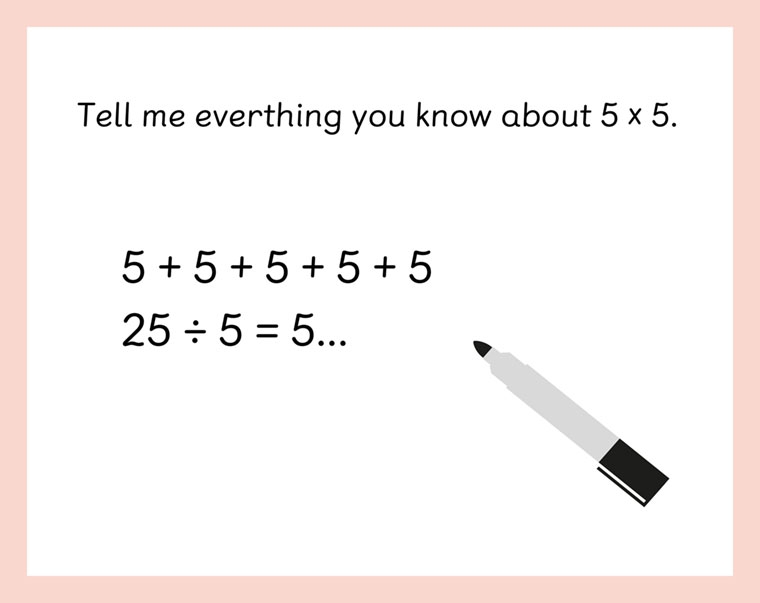The art of effective questioning
Editor’s Note:
This is an updated version of a blog post published on December 21, 2017.
The art of effective questioning (one teacher’s perspective)
Why is effective questioning an art? Because it takes time, practice, and a lot of reflection. In our experience, asking the right questions in primary maths classrooms helps us understand what our pupils know, don’t know, and need to know. Questioning has allowed us to identify learners who are struggling with particular concepts, and those with more advanced learning skills. On top of that, it’s been an essential tool for assessment, and has enabled us to better develop learners regardless of their current state or attainment level.
As classroom teachers, we all understand the importance of providing a framework for students to work within. The questions we ask and effective assessment we provide can help form a canvas upon which they can express, explore and deepen their knowledge.
For us, the importance of questioning emerged after we realised the need to uncover ways to learn what children know throughout the lesson — not just at the beginning. Asking open ended questions provided the insight we were looking for.
We realised that starting a maths lesson with a question, problem or Anchor Task gives children the ability to dig deep into their knowledge-banks and actively use what they already know. It provides them with an opportunity to make connections and transition smoothly into new concepts.
What is an open question?
Let’s start with an example. I can ask my students ‘What is 5 × 5?’ Most will tell me that the answer is 25. From this, I can assume that they knew their five times tables.
However, I can build and expand on that: ‘Tell me everything you know about 5 × 5.’ Right away, this is an open question — there’s no one answer, and what comes next is really up to them. From it, I can receive a wide range of answers including ‘5 + 5 + 5 + 5 + 5’ or ‘25 ÷ 5 = 5’.
We realised that these kinds of open questions gave us much better insight into our pupils’ learning journeys. We were better able to identify who was ready to learn the next concept, who had made links with previous learning, and who needed to consolidate their learning. Through that one question, we found out more about our pupils’ starting points than if we had given them 10 or 20 rote calculations.

Transform Your Maths Assessment
Insights — our online assessment tool — gives you instant, powerful data to identify gaps and improve results.

When to question (and how)
Some questions come up naturally prior to learning. These are the ones that help us understand where pupils’ starting points are — who understands the important concepts from previous years that inform the learning we are about to attempt.
Other questions should be asked during key learning. We’ve found that these questions show us how deeply embedded a concept is, if pupils can apply learnings to the bigger picture, and if the skills they are developing have been correctly understood. In our experience, this sort of questioning gives valuable insight into our development as reflective practitioners — we’re constantly interrogating our own practice while developing the skills and confidence of our learners.
Some questions are for plenaries. This can happen at the end of a lesson, or mid-lesson. Either way, the purpose is the same — to examine student understanding at a particular stage. We ask these during whole-class situations, and have learned to take care who we ask to answer. For example, we allow struggling learners to contribute their understanding as far as it goes, and then allow a more confident and advanced learner to provide a more developed contribution to the discussion. We’ve found that this has really helped all learners feel valued, heard, and recognized within the class.
Regardless of when the question is asked, we have learned that effective questioning needs to be wholly focussed and targeted — our teachers must be clear about what they want to discover, before they ask the question.
Strategies for effective questioning
Build a list
Try creating a bank of ‘question starters.’ We’ve found it useful to create a list of questions that can be compiled over the years, taking into account different year groups and also developments in educational thinking.
Always be open
All effective question starters are open. The more open, the more pupils will reflect, and the more confident they will be to talk about what they know. For example, ‘How many ways can you show me your thinking?’ has worked much better for us than something like ‘Show me what strategy you used.’
Don’t rush
We found that sometimes we were rushing our pupils to give an immediate answer. We decided to give them time, and to not be afraid of silence. This made a difference not only in the quality of the answers, but also enabled a much wider group of learners to feel confident enough to contribute.
In our journey towards effective questioning, we have discovered through trial and error that pupils are surprising. They enjoy actively engaging with the concepts being taught, and they often create links between concepts that surprise us. In our experience, the art of effective questioning is engaging with pupils, having a clear end in mind when asking a question, but being ready to explore a different route with learners.
We’ve found that active questioning requires our teachers to actively listen to pupils in their classroom. Doing so has developed better relationships, and also a better understanding of student progress. Pupils are frequently challenged to think beyond their comfort zones, and to play with concepts within the spiral curriculum of mathematics.
Helena (Ayales) Bryant
